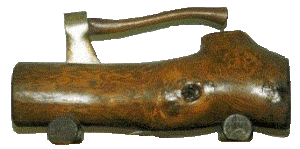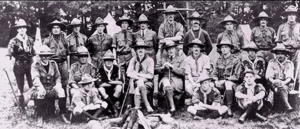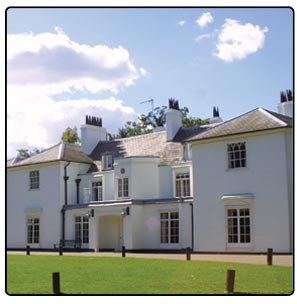Gilwell Park and the Scout Movement
Gilwell Park, an estate located next to Epping Forest, Essex, England. Bought for The Scout Association in 1919 by a donation received by Mr. William de Bois Maclaren for £10,000 for use as a campsite for Scouts and a training center for Scout Leaders.
Índice
Location[editar]
Gilwell Park is situated on the edge of the picturesque Epping Forest, yet is within easy travelling distance of the sights of London. The Prime meridian (Greenwich Meridian) - (the line of zero longitude runs through the campsite. The land was, at an earlier time, owned by Henry VIII of England, who built a hunting lodge for his son Edward VI of England. A later owner of the land built a more substantial house around the lodge, which eventually became known as the White House.
How to get there[editar]
Early History[editar]
AFTER the end of the War, on November 20th, 1918, Mr William F. de Bois Maclaren, a District Commissioner for Rosneath in Dumbartonshire, Scotland, dinned with B-P at Roland House, an International Hostel for Scouts, in London. They discussed the need for a permanent camping ground for London Scouts. Maclaren was forthcoming - "You find what you want and I will buy it."
A small committee was formed, including Percy Everett, and it was decided that the money would be best employed if the camping ground could be combined with a "centre for the training of Scout Officers". Maclaren agreed and the committee quickly found Gilwell Park, a run-down estate that, at the time, was up for sale on the edge of Epping Forest near Chingford, Essex, which was ideally suited to the purpose. B-P, impressed with their description, agreed to the purchase without a prior visit.
Francis Gidney was appointed Camp Chief in May 1919. "Skipper" Gidney was a young man who had served as a Captain during the First World War and had immense energy and, most important from Baden-Powell's view, tremendous spirit. His Assistant Scoutmaster was Capt. F S Morgan, District Commissioner for Swansea. In the June issue of The Headquarters' Gazette there was a short article outlining the twin purposes of the site - Scoutmaster Training and Boy Scout Camping Ground. The section dealing with Scoutmaster Training is quoted in full below.
"An Officers' Training Centre, where Scoutmasters, or those who wish to become Scoutmasters, will be trained by competent old Scouts in the formation and training of troops, practical woodcraft and camping and the methods of the Boy Scouts generally." The opening ceremony took place on Saturday, July 26th, 1919 (not July 25th as quoted in The Gilwell Book!), in perfect weather. Mrs Maclaren cut a ribbon in the Scout Colours of green and yellow. (This is specially remarked on in several sources as though cutting a ribbon was a novel idea never seen before!)
Gilwell Camp Chief[editar]
Francis Gidney, the first Camp Chief, conducted the first Wood Badge course in September of 1919 at Gilwell Park, the home of leadership training in the Scout Movement. Leaders all over the world become part of the Gilwell Troop (First Gilwell Park Scout Group) upon completion of the Wood Badge. These leaders are henceforth called Wood Badgers or Gilwellians. Wherever Wood Badgers meet is called Gilwell Field.
The First Gilwell Park Scout Group meets every first week-end of September in Gilwell Park for the Gilwell Reunion.
World Scout Centres[editar]
As with Brownsea Island and Kandersteg International Scout Centre, Gilwell Park is one of the great landmarks of the world Scouting movement. The site can accommodate events for up to 10,000. It contains a range of camp sites, indoor accommodations and activities, suitable for all sections of the Scouting Movement. Gilwell Park can also be hired for non-Scout activities, such as conferences and wedding receptions.


